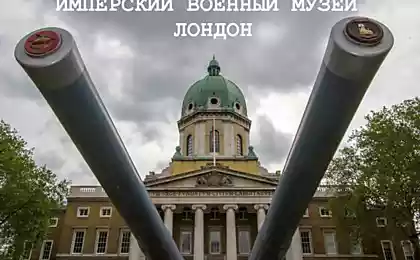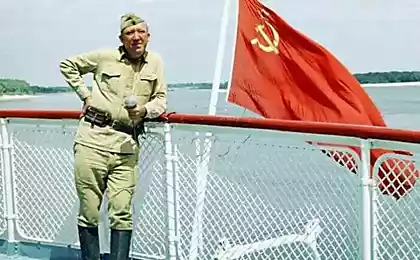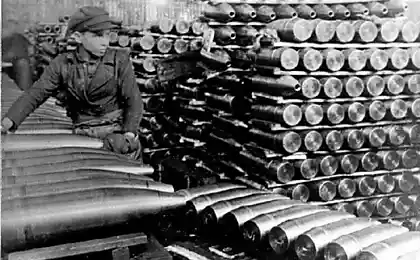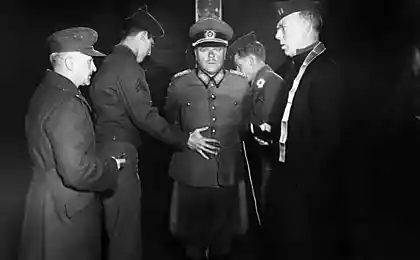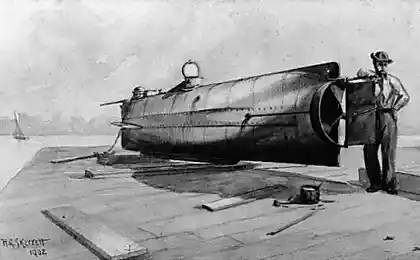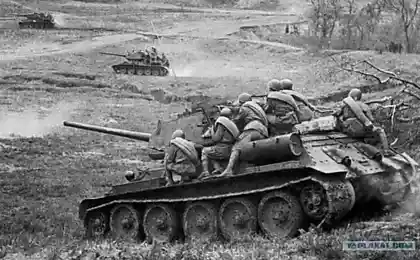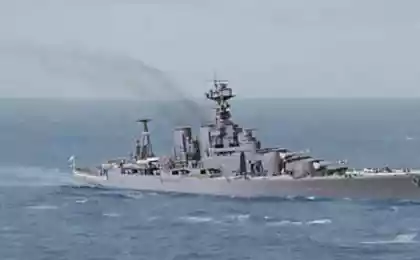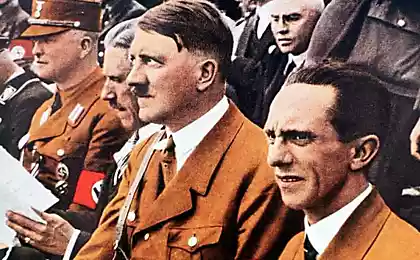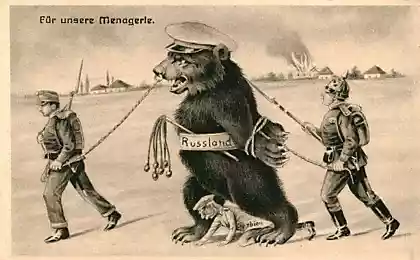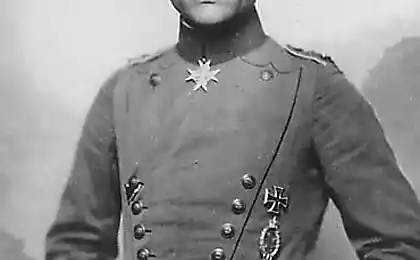1274
Unbelievable aviaproekty WWII
Traditionally, in times of war, the country's enemies and their allies apply maximum efforts to build weapons and the development of new, more effective military equipment. The Second World War was not the exception. In those years, there were quite strange aircraft projects that have been implemented with varying degrees of success.
1. Blohm & Voss BV 141

At the beginning of World War II, the German Air Ministry announced a tender for development of a new tactical reconnaissance aircraft, which would be used to support military operations. We responded to the two companies. Focke-Wulf developed quite common twin-engine aircraft Fw 189. Constructors Blohm & Voss approached the issue more creatively, creating an asymmetrical Bv 141.
To the left of the axis of symmetry of the aircraft fuselage was located with the engine and bomb hatches, and the right crew cabin. Through this unusual arrangement of the cockpit, Bv 141 offers an unprecedented field of view for the pilot and observer, because the flight review is not closed a huge engine and the rotating blades.
After the test, the Luftwaffe ordered 500 such aircraft. Soon, however, during the bombardment it was severely damaged one of the main plant Focke-Wulf, so the government gave the order to use 80 percent of the capacity of the plant Blohm & Voss to create a proven fighter Focke-Wulf. Bv 141 works were finally stopped after it was built 38 copies of a scout. During the war they were all destroyed.
2. Horten Ho 229
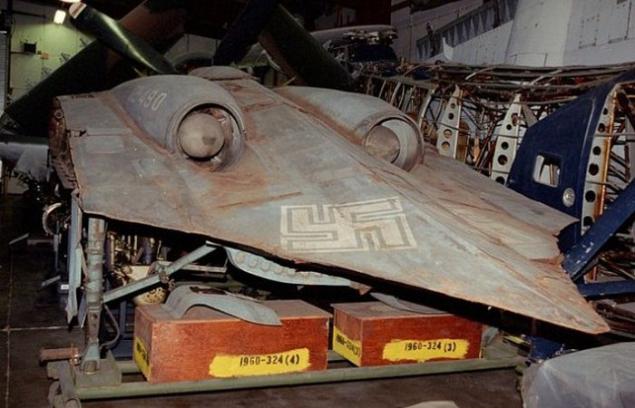
Another unusual project is of Nazi aircraft Horten Ho 229 was developed at the end of the war, after the German scientists have developed technology of jet engines. By 1943, the Luftwaffe commanders realized that they made a huge mistake by not starting to build heavy bombers like the B-17 to the American or British Lancaster. To make up for this deficiency, the boss of the Luftwaffe Hermann Goering gave orders to build a bomber that could carry a bomb load of 1000 kg and have a range of 1,000 kilometers at a speed of 1000 kilometers per hour.
The brothers Reimar and Walter Horten began designing a turbojet aircraft on a "flying wing". The Nazis managed to build by 1945 only one prototype, which was captured by the Allies at the end of the war. Interestingly, in 2008, Northrop Grumman engineers have created a replica of the Ho 229, based on surviving prototype, which is in the Smithsonian Institution. When checking for the radar frequencies that were used during World War II, it was discovered that in fact Ho 229 was the first stealth aircraft.
3. Vought V-173 / XF5U-1
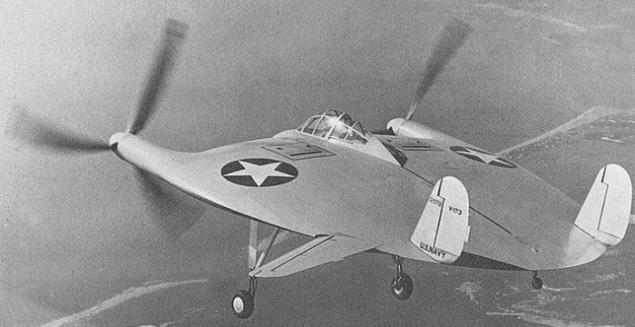
Since the 1930s engineer Vought Vought Charles H. Zimmerman began experimenting with disk-shaped aircraft. As a result, in 1942, he rose in the air the first prototype "flying pancake» V-173. While his company has continued to produce the famous F4U Corsair for military purposes, Zimmerman has not stopped working on the fighter in the form of a disk, which eventually became known as XF5U.
Flight characteristics of the new fighter surpassed all other airplanes of the time. Through the use of two engines Pratt & Whitney, XF5U had to reach a speed of about 885 kilometers per hour. But while the tests were carried out, World War II ended, while Vought into financial difficulties, as the navy decided to switch to jets. As a result, the project XF5U abandoned, and the only built a prototype V-173 was transferred to the museum.
4. Boulton Paul Defiant
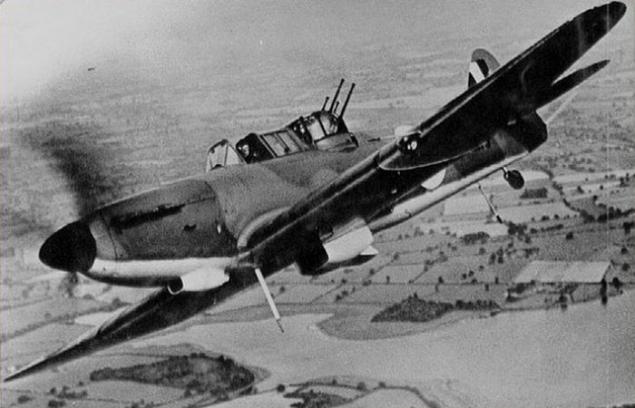
Of all the airplanes in this list, Boulton Paul Defiant used most actively. Unfortunately, this has led to the deaths of many young pilots. The plane was designed on the basis of false assumptions of the 1930s about how the future will develop in the war in the air. British commanders believed that the bombers, who will attack Britain will mainly fly unaccompanied. Just for such cases and was created by heavy fighter, the main feature of which was that he could only fire back (all weapons - 4h7, 69-mm machine gun - it was found in a rotating turret behind the cockpit).
In theory, it is freed from shooting the pilot, allowing him to concentrate on the flight, and made it possible to better aim the arrow. The first flights were successful, as the unsuspecting German fighter pilots mistook the plane for the same kind of Hawker Hurricane and attacked him from above or behind, it is the perfect firing position for the shooter Defiant. But the Luftwaffe pilots quickly realized his mistake and began to attack aircraft such bottom or the front. Because of the lack of weapons and bad course of maneuverability due to severe tower, pilots Defiant suffered huge losses during the air battles.
5. Bell YFM-1 Airacuda
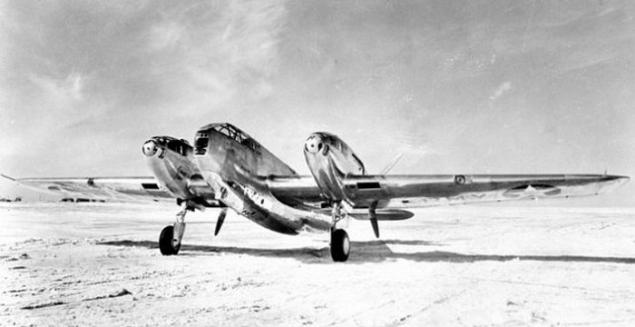
In the period between the First and Second World Wars, many countries have been concerned about the possibility of strategic bombing. Therefore, most major powers have started to build heavy fighter intended to intercept the bombers. British Defiant proved unsuccessful and the German Bf-110 was the most multi-purpose aircraft.
Soon, the US YFM-1 Airacuda - the first military aircraft Bell Aircraft. It was realized a variety of original and innovative ideas. In particular, it provides accommodation vperedstrelyayuschih two 37-mm guns M-4 in front of the engine nacelles, as well as the location of the rear screws. Due to a number of flaws and that Airacuda were too slow, maintenance of aircraft has been discontinued.
6. Antonov A-40
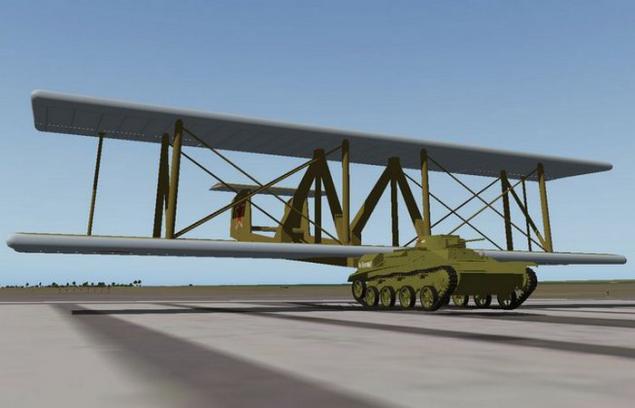
Military gliders played an important role in World War II because of its quietness. Of all the gliders during the war the most unusual was the Soviet Union developed the A-40 - "flying tank". Most countries were looking for all sorts of ways to quickly and effectively deliver tanks to the front. The transfer them via gliders initially seemed a great idea, but the engineers soon discovered that the tanks are among the least aerodynamic vehicles.
After countless attempts to develop a reliable delivery system of tanks through the air, most countries simply surrendered. But it is not the Soviet Union. Based on the ideas of the American engineer J. Walter Christie, who originally developed the concept of a flying tank in 1930, in 1942 the USSR was created a huge biplane, instead of the fuselage which was the T-60. Despite the fact that the test flight was successful (tank after landing back at the base), the project was canceled, because the Soviet Union is simply not enough aircraft powerful enough to tow a glider with a tank.
7. Junkers Ju-287

In 1943 Junkers engineer Hans Wocke initiated the establishment of one of the most innovative aircraft German aircraft of World War II: Ju-287. Engineers in the 30s realized that the aircraft with straight wings will have a top speed limit, but at the time this one did not care, because the propeller planes could not reach this speed. However, with the advent of jet technology, everything has changed and began feverish development.
Wocke proposed jet aircraft with forward-swept wing, which he believed would be able to outrun any airplanes at that time. This new type of wing had many benefits: increased maneuverability at high speeds and high angles of attack, the best stall characteristics and a more compact arrangement of weapons and engines. During test flights Ju-287 proved to be a great, surpassing all projections.
Unfortunately for Wocke interest in fast jet bombers weakened and its creation was delayed until March 1945. As a result, the Germans did not have time. Interest in the forward-swept wing resumed only after 40 years.
8. Cornelius XFG-1
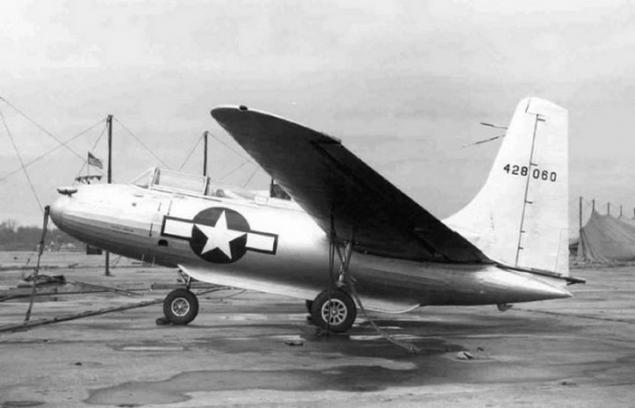
George Cornelius - the engineer, the development of many well-known eccentric airframe and aircraft. When the Second World War, Cornelius was hired to he developed XFG-1 - one of the most specialized aircraft for the time aircraft construction. In essence, XFG-1 was flying fuel tank, which was towed behind a bomber, slowly pumping fuel from the tanks XFG-1 and disengaged when the tanks refueling opustevayut.
9. Link SPB
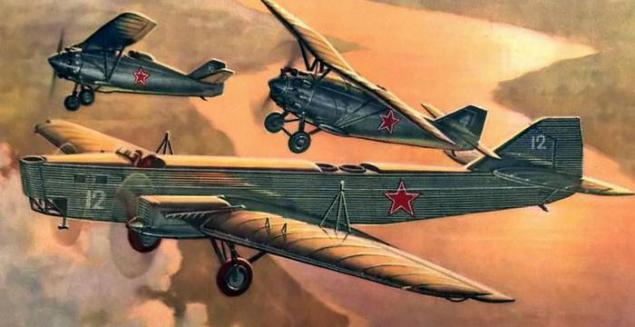
The idea of a flying aircraft carrier was first introduced during the First World War. While military engineers dreamed of creating a great airship, the uterus, which would let the small units of fighters to defend against enemy aircraft. British and American trials ended in disaster, then abandoned the idea of everything, except the Soviet Union.
In 1931, aeronautical engineer Vakhmistrov suggested using large Tupolev bombers to carry fighters. Throughout the 1930s Vakhmistrov experimented with different configurations, offer five fighters, attached to the bomber TB-3 (two I-5, I-16, two and one and-Z).
By the beginning of World War II Vakhmistrov refocused concept - it now offers the fighters use as dive bombers. For TB-3 began to hang the only two I-16, each of which carried two bombs FAB-250. At the same time the range of the fighters was increased. Despite the successful flights, the project was closed when all the I-16 and TB-3 were taken out of production in favor of more modern designs.
10. Fieseler Fi-103R

Most people are familiar with the concept of the Japanese kamikaze, who directed at the target plane with explosives. Less well known is the German attempt to build a similar weapon, making cruise missiles V-1 (V-1) in manned. At the V-1 rocket was a huge potential, but they lacked precision. Use existing fuselages V-1, the German engineers were able to install a small cabin in front of the jet engine, as well as basic controls for the pilot.
Unlike the V-1 missiles that are launched from the ground, manned rocket Fi-103R was launched from the air, from the He-111 bomber. Once the rocket was launched, the pilot had to bring it exactly on the target, and then jump with a parachute.
1. Blohm & Voss BV 141

At the beginning of World War II, the German Air Ministry announced a tender for development of a new tactical reconnaissance aircraft, which would be used to support military operations. We responded to the two companies. Focke-Wulf developed quite common twin-engine aircraft Fw 189. Constructors Blohm & Voss approached the issue more creatively, creating an asymmetrical Bv 141.
To the left of the axis of symmetry of the aircraft fuselage was located with the engine and bomb hatches, and the right crew cabin. Through this unusual arrangement of the cockpit, Bv 141 offers an unprecedented field of view for the pilot and observer, because the flight review is not closed a huge engine and the rotating blades.
After the test, the Luftwaffe ordered 500 such aircraft. Soon, however, during the bombardment it was severely damaged one of the main plant Focke-Wulf, so the government gave the order to use 80 percent of the capacity of the plant Blohm & Voss to create a proven fighter Focke-Wulf. Bv 141 works were finally stopped after it was built 38 copies of a scout. During the war they were all destroyed.
2. Horten Ho 229

Another unusual project is of Nazi aircraft Horten Ho 229 was developed at the end of the war, after the German scientists have developed technology of jet engines. By 1943, the Luftwaffe commanders realized that they made a huge mistake by not starting to build heavy bombers like the B-17 to the American or British Lancaster. To make up for this deficiency, the boss of the Luftwaffe Hermann Goering gave orders to build a bomber that could carry a bomb load of 1000 kg and have a range of 1,000 kilometers at a speed of 1000 kilometers per hour.
The brothers Reimar and Walter Horten began designing a turbojet aircraft on a "flying wing". The Nazis managed to build by 1945 only one prototype, which was captured by the Allies at the end of the war. Interestingly, in 2008, Northrop Grumman engineers have created a replica of the Ho 229, based on surviving prototype, which is in the Smithsonian Institution. When checking for the radar frequencies that were used during World War II, it was discovered that in fact Ho 229 was the first stealth aircraft.
3. Vought V-173 / XF5U-1

Since the 1930s engineer Vought Vought Charles H. Zimmerman began experimenting with disk-shaped aircraft. As a result, in 1942, he rose in the air the first prototype "flying pancake» V-173. While his company has continued to produce the famous F4U Corsair for military purposes, Zimmerman has not stopped working on the fighter in the form of a disk, which eventually became known as XF5U.
Flight characteristics of the new fighter surpassed all other airplanes of the time. Through the use of two engines Pratt & Whitney, XF5U had to reach a speed of about 885 kilometers per hour. But while the tests were carried out, World War II ended, while Vought into financial difficulties, as the navy decided to switch to jets. As a result, the project XF5U abandoned, and the only built a prototype V-173 was transferred to the museum.
4. Boulton Paul Defiant

Of all the airplanes in this list, Boulton Paul Defiant used most actively. Unfortunately, this has led to the deaths of many young pilots. The plane was designed on the basis of false assumptions of the 1930s about how the future will develop in the war in the air. British commanders believed that the bombers, who will attack Britain will mainly fly unaccompanied. Just for such cases and was created by heavy fighter, the main feature of which was that he could only fire back (all weapons - 4h7, 69-mm machine gun - it was found in a rotating turret behind the cockpit).
In theory, it is freed from shooting the pilot, allowing him to concentrate on the flight, and made it possible to better aim the arrow. The first flights were successful, as the unsuspecting German fighter pilots mistook the plane for the same kind of Hawker Hurricane and attacked him from above or behind, it is the perfect firing position for the shooter Defiant. But the Luftwaffe pilots quickly realized his mistake and began to attack aircraft such bottom or the front. Because of the lack of weapons and bad course of maneuverability due to severe tower, pilots Defiant suffered huge losses during the air battles.
5. Bell YFM-1 Airacuda

In the period between the First and Second World Wars, many countries have been concerned about the possibility of strategic bombing. Therefore, most major powers have started to build heavy fighter intended to intercept the bombers. British Defiant proved unsuccessful and the German Bf-110 was the most multi-purpose aircraft.
Soon, the US YFM-1 Airacuda - the first military aircraft Bell Aircraft. It was realized a variety of original and innovative ideas. In particular, it provides accommodation vperedstrelyayuschih two 37-mm guns M-4 in front of the engine nacelles, as well as the location of the rear screws. Due to a number of flaws and that Airacuda were too slow, maintenance of aircraft has been discontinued.
6. Antonov A-40

Military gliders played an important role in World War II because of its quietness. Of all the gliders during the war the most unusual was the Soviet Union developed the A-40 - "flying tank". Most countries were looking for all sorts of ways to quickly and effectively deliver tanks to the front. The transfer them via gliders initially seemed a great idea, but the engineers soon discovered that the tanks are among the least aerodynamic vehicles.
After countless attempts to develop a reliable delivery system of tanks through the air, most countries simply surrendered. But it is not the Soviet Union. Based on the ideas of the American engineer J. Walter Christie, who originally developed the concept of a flying tank in 1930, in 1942 the USSR was created a huge biplane, instead of the fuselage which was the T-60. Despite the fact that the test flight was successful (tank after landing back at the base), the project was canceled, because the Soviet Union is simply not enough aircraft powerful enough to tow a glider with a tank.
7. Junkers Ju-287

In 1943 Junkers engineer Hans Wocke initiated the establishment of one of the most innovative aircraft German aircraft of World War II: Ju-287. Engineers in the 30s realized that the aircraft with straight wings will have a top speed limit, but at the time this one did not care, because the propeller planes could not reach this speed. However, with the advent of jet technology, everything has changed and began feverish development.
Wocke proposed jet aircraft with forward-swept wing, which he believed would be able to outrun any airplanes at that time. This new type of wing had many benefits: increased maneuverability at high speeds and high angles of attack, the best stall characteristics and a more compact arrangement of weapons and engines. During test flights Ju-287 proved to be a great, surpassing all projections.
Unfortunately for Wocke interest in fast jet bombers weakened and its creation was delayed until March 1945. As a result, the Germans did not have time. Interest in the forward-swept wing resumed only after 40 years.
8. Cornelius XFG-1

George Cornelius - the engineer, the development of many well-known eccentric airframe and aircraft. When the Second World War, Cornelius was hired to he developed XFG-1 - one of the most specialized aircraft for the time aircraft construction. In essence, XFG-1 was flying fuel tank, which was towed behind a bomber, slowly pumping fuel from the tanks XFG-1 and disengaged when the tanks refueling opustevayut.
9. Link SPB

The idea of a flying aircraft carrier was first introduced during the First World War. While military engineers dreamed of creating a great airship, the uterus, which would let the small units of fighters to defend against enemy aircraft. British and American trials ended in disaster, then abandoned the idea of everything, except the Soviet Union.
In 1931, aeronautical engineer Vakhmistrov suggested using large Tupolev bombers to carry fighters. Throughout the 1930s Vakhmistrov experimented with different configurations, offer five fighters, attached to the bomber TB-3 (two I-5, I-16, two and one and-Z).
By the beginning of World War II Vakhmistrov refocused concept - it now offers the fighters use as dive bombers. For TB-3 began to hang the only two I-16, each of which carried two bombs FAB-250. At the same time the range of the fighters was increased. Despite the successful flights, the project was closed when all the I-16 and TB-3 were taken out of production in favor of more modern designs.
10. Fieseler Fi-103R

Most people are familiar with the concept of the Japanese kamikaze, who directed at the target plane with explosives. Less well known is the German attempt to build a similar weapon, making cruise missiles V-1 (V-1) in manned. At the V-1 rocket was a huge potential, but they lacked precision. Use existing fuselages V-1, the German engineers were able to install a small cabin in front of the jet engine, as well as basic controls for the pilot.
Unlike the V-1 missiles that are launched from the ground, manned rocket Fi-103R was launched from the air, from the He-111 bomber. Once the rocket was launched, the pilot had to bring it exactly on the target, and then jump with a parachute.




